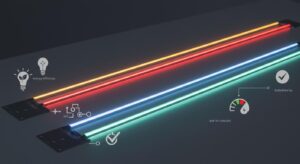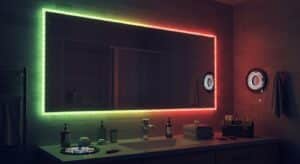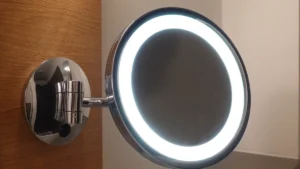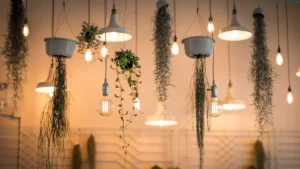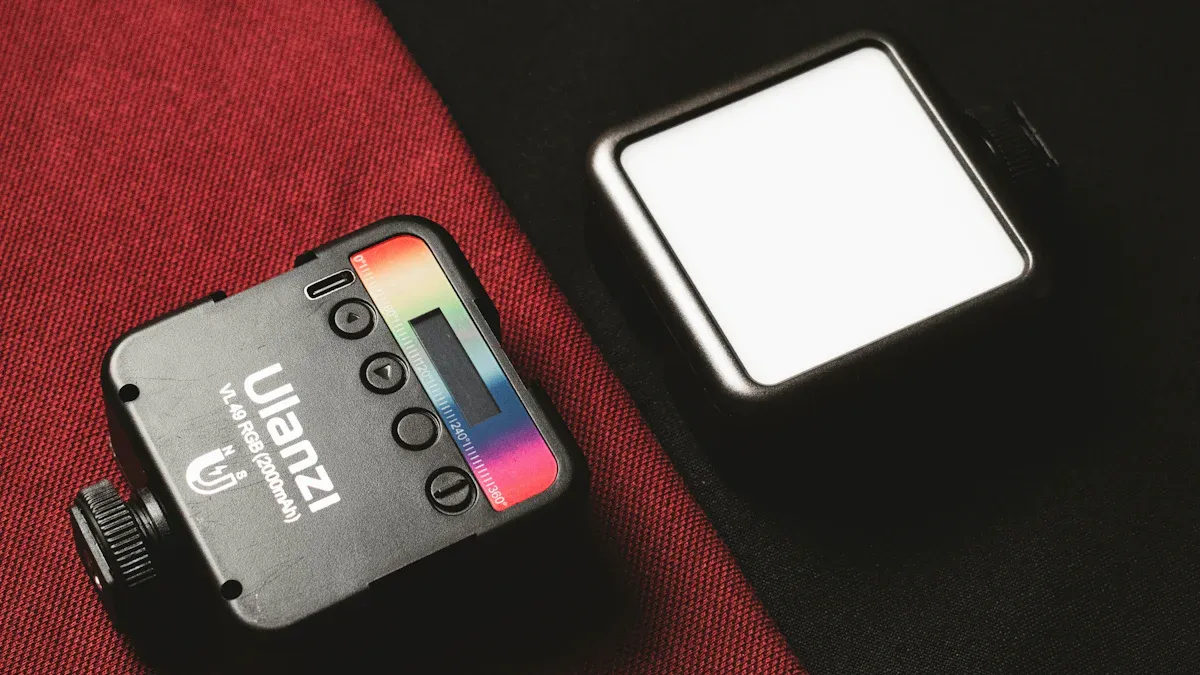
Choosing the right LED light bar needs careful thought.
Size, brightness, and type of light bar matter a lot.
Two light bars with the same lumens can shine differently.
Lens or reflector designs change how light spreads.
Lux levels show light strength at a distance and can vary.
Some models differ by over 50% in lux levels.
Wattage doesn’t always mean brighter light due to efficiency.
Knowing these things helps your light box shine its best.
Key Takeaways
Measure your light box carefully so the LED bar fits and lights evenly.
Pick the right brightness by learning about lumens and matching them to your light box’s use.
Choose a colour temperature that matches the mood and purpose, like warm or cool.
Make sure the LED strip voltage matches the power supply to prevent dim light or damage.
Install the LED light bar properly to make it last longer.
Figuring out the size of the light box
Measuring your light box size
To pick the right LED light bar, measure your light box. First, check the outside size, which is the full box size. Next, measure the graphic size, the area for your artwork. This is smaller than the outside size. Lastly, find the visual opening, the lit-up part people see. This is smaller than the graphic size because the frame hides the edges.
Here’s a simple table to explain these sizes:
Measurement Type | What It Means |
|---|---|
Outside size | The total size of the light box. |
Graphic size | The size of the artwork area, smaller than the outside size. |
Visual opening | The lit-up part, smaller than the graphic size due to the frame. |
Measuring correctly helps the LED light bar fit well and light up evenly.
Working out the LED light bar length needed
After measuring, figure out how long the LED light bar should be. For rectangle boxes, measure the visual opening’s length and width. Add these to get the total edge length for the LED strips. For odd-shaped boxes, trace the lit-up edges and measure the total length.
Getting the right length stops lighting gaps and keeps brightness even.
Thinking about where to place LED strips in the box
Where you put the LED strips matters for good lighting. Place them along the visual opening’s edges for even light. For big boxes, add strips in the middle or behind the artwork to avoid dark spots. Space the strips evenly to spread light well.
Good placement makes your light box look better and lights it up properly.
Understanding brightness and lumens needs
What are lumens, and why are they important?
Lumens show how much light a source gives off. They tell us how bright the light looks to our eyes. Watts measure energy use, but lumens focus on brightness. LEDs are better because they give more lumens per watt than old bulbs. This makes them very efficient.
‘Useful lumens’ are also key. They mean the light used in a certain area. This gives a clearer idea of brightness. The Colour Rendering Index (CRI) also matters. Higher CRI means better light quality. With good CRI, fewer lumens can still look bright.
Suggested lumens for different light box uses
The best lumens for a light box depend on its Reading Opening Value (ROV). Use this table to find the right lumens:
Lightbox Reading Range | Formula for Estimated Lumens |
|---|---|
< 20 ROV | Estimated Lumens = 0.56 * ROV^1.30 |
> 25 ROV | Estimated Lumens = 0.28 * ROV^1.48 |
20 to 25 ROV | Average of the two methods |
These formulas help you pick the right brightness. This ensures your light box works well for its purpose.
Matching brightness with energy saving
When picking LED light bars, think about brightness and energy use. Lumens show total light, but they’re not the only thing to check. Lens and reflector designs change how light spreads. This can affect how well the light works. Lux measures light strength on a surface and is useful for distance lighting.
LEDs now give more light while using less power. This means you get great brightness and save energy too. Don’t just look at wattage, as it doesn’t always match lumens in LEDs.
Tip: Choose LED light bars with smart designs and high CRI. This helps you get bright light and save energy at the same time.
Picking the right colour temperature
What does colour temperature mean?
Colour temperature shows how white the light looks. It is measured in kelvins (K). It tells if the light feels warm or cool. LEDs have a correlated colour temperature (CCT). This matches their light to a black-body radiator with similar light.
The Kelvin scale, made by William Lord Kelvin, measures light colours.
Absolute zero on this scale is the coldest light colour.
Brightness matters, but colour temperature affects light quality too.
Knowing CCT helps you pick the right look for your light box.
Warm white or cool white: Which suits your light box?
Warm white lights (2700K–3000K) and cool white lights (3500K–5000K) are used differently. Each type works best in certain places.
Warm white lights: These give a cosy, relaxing feel. They are great for homes, restaurants, or displays needing comfort.
Cool white lights: These are brighter and energising. They suit offices, workshops, or retail displays needing focus.
Studies show colour temperature affects mood and work. Cool lights help focus and energy. Warm lights make spaces calm and comfy.
Tip: Think about the space and mood you want when choosing warm or cool LEDs.
Choosing colour temperature based on light box use
The use of your light box decides the best colour temperature. Cool white LEDs are great for retail displays, making colours stand out. Warm white LEDs are better for decoration, giving a soft, welcoming glow.
Here’s a simple guide:
Light Box Purpose | Best Colour Temperature |
|---|---|
Retail or product displays | 4000K–5000K (Cool White) |
Decorative or ambient lighting | 2700K–3000K (Warm White) |
Task-focused applications | 3500K–4500K (Neutral to Cool) |
Picking the right colour temperature improves how your light box looks and works. Match the lighting to its purpose for the best results.
Power and voltage compatibility
Knowing voltage needs for LED strip lights
LED strip lights need specific voltages to work properly. The voltage depends on how the LEDs are arranged in the strip. For instance, a strip with three LEDs in a row needs 9V, as each LED uses 3V. Similarly, a 12V strip includes 9V for the LEDs and 3V for resistors.
Here’s a simple table of common voltage needs:
LED Setup | Voltage Needed | Why It’s Needed |
|---|---|---|
3 LEDs in a row | 9V | 3V per LED x 3 LEDs |
6 LEDs in a row | 18V | 3V per LED x 6 LEDs |
12V LED Strip | 12V | 9V for LEDs + 3V for resistors |
24V LED Strip | 24V | 18V for LEDs + 6V for resistors |
Using the right voltage helps LEDs work well and last longer. Wrong voltage can make them dim or cause damage.
Matching your light box’s power supply
It’s important to match the LED strip voltage with your light box’s power supply. If the power supply gives less voltage, the LEDs will look dim. Too much voltage can overheat and harm the LEDs.
This table shows how voltage affects brightness and current:
Voltage (V) | Current Draw (mA) |
|---|---|
2.5 | Very low (dim) |
2.9 | 80 |
3.0 | 120 |
3.1 | 160 |
3.2 | 200 (max rating) |
Always check the LED strip’s voltage rating. Make sure the power supply matches it to avoid problems.
Tips for picking a good power adapter
Choosing the right power adapter is key for safety and performance. Follow these steps to pick the best one:
Find out the LED strip voltage: Most strips use 12V or 24V DC. Match the adapter to this voltage.
Check power usage: Add up the total wattage or amperage of your strip. Pick an adapter with slightly more capacity to handle it.
Check the connection type: Make sure the adapter fits your LED strip. Use connectors if needed.
Tip: Choose adapters with certifications like CE, FCC, or BIS for safety and quality.
Here’s a table of key certifications for power adapters:
Certification | Where It’s Used | Mandatory or Optional | What It Ensures |
|---|---|---|---|
FCC Certification | US | Mandatory | EMC |
CE Certification | European Union | Mandatory | LVD and EMC tests |
BIS Certification | India | Mandatory | Safety |
Certified power adapters are safer and meet quality standards.
Installation tips for LED strip lights
Getting your light box ready for installation
Good preparation makes installing easier. First, choose good-quality LED strips. Pick ones with the right brightness and colour for your light box. Gather tools like scissors, a drill, clamps, and a tape measure. These tools help you cut, measure, and secure parts properly.
Next, get the light box parts ready. Cut the frame and back panel to the right size. Clean the acrylic sheet and make sure the graphics are neat and straight. Once everything is ready, put the light box together. Attach the LED strips, fix the acrylic sheet and graphics, and secure the frame and back panel. Test the LED strips to check they work before finishing the setup.
Fixing the LED light bar in place
Fixing the LED light bar properly makes it last longer. Start by connecting the LEDs. Bend the legs of each LED at a 90-degree angle. Solder them together in a series to connect them. Add a resistor to the positive leg of each LED and solder it to the positive wire. This stops the LEDs from getting too much power.
After connecting the LEDs, use hot glue to hold them in place. This keeps them steady and safe. For extra support, use rubber-insulated clamps to attach the light bar to the box. Screw the clamps tightly to keep the light bar secure.
Checking and fixing problems after installation
After setting up the LED strips, test the light box to make sure it works well. Check how bright the light is by measuring the lumens. If the light is dim, check the power supply and connections. Make sure the voltage matches the LED strip’s needs.
Look for dark spots or uneven lighting in the box. Move the LED strips if needed to fix the problem. If the issue continues, contact the supplier to check the product quality. While LED strips are tested during production, checking them after installation helps find any issues.
Tip: Regular checks and care can make your LED light bar last longer and keep your light box working well.
Picking the right LED light bar needs some thought. You should measure your light box size, decide on brightness, pick a colour temperature, check power needs, and install it correctly. These steps help your light box work well and last longer.
Here’s a simple checklist to help you:
Measure your light box size carefully.
Work out how bright the light should be.
Choose a colour temperature that fits your light box use.
Check the voltage and power supply match.
Set up and secure the LED light bar properly.
By using this checklist, your light box will shine evenly and work well for a long time.
FAQ
What is the best way to clean LED strip lights?
You can clean LED strip lights with a soft, dry cloth. Avoid using water or harsh chemicals, as they may damage the LEDs. If the strips are dusty, gently wipe them to maintain their brightness and performance.
Can LED strip lights be cut to size?
Yes, most LED strip lights can be cut to size. Look for marked cutting points on the strip. Use scissors to cut along these points. This ensures the LEDs continue to work properly after trimming.
How do you choose the right LED for under cabinet lighting?
Choose LEDs with a colour temperature of 3000K–4000K for under cabinet lighting. This range provides a balance between task lighting and ambience. Ensure the brightness matches your needs and the strips fit the cabinet dimensions.
Are LED strip lights suitable for ambient lighting?
Yes, LED strip lights work well for ambient lighting. They provide soft illumination, enhancing the room’s ambience. Choose warm white LEDs for a cosy feel or cool white for a modern look.
What should you do if an LED strip stops working?
Check the power supply and connections first. Ensure the voltage matches the LED strip’s requirements. If the issue persists, inspect the strip for damage or contact the supplier for assistance.
See Also
Understanding The Functionality Of LED Light Bars In Lightboxes
Guidelines For Fitting LED Light Bars In Signage
Selecting The Perfect LED Light Module For Your Needs
Using Edge-Lit LED Bars For Effective Lightbox Signage
Comparing Backlit And Edge-Lit LED Light Bars Explained
